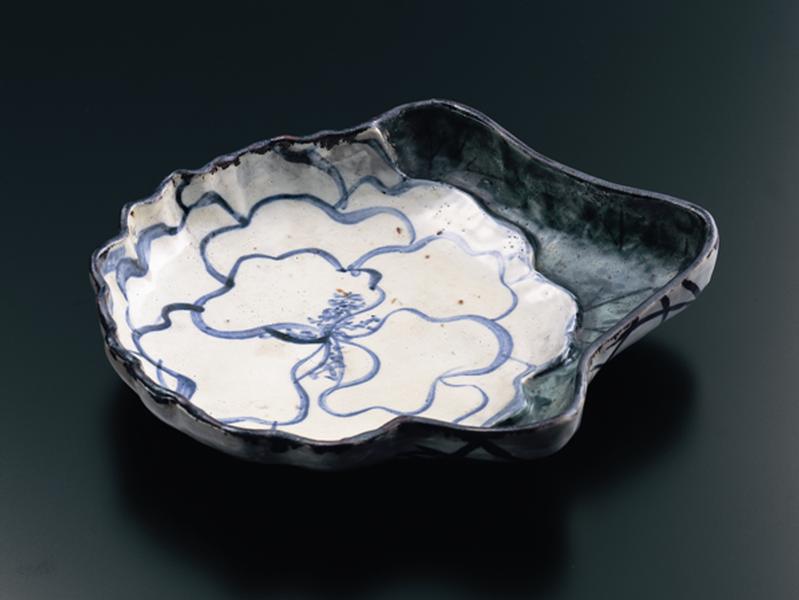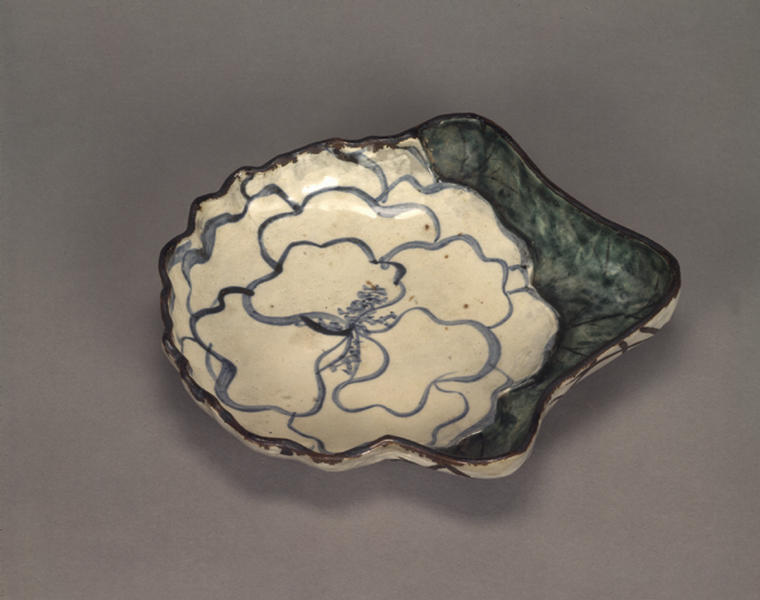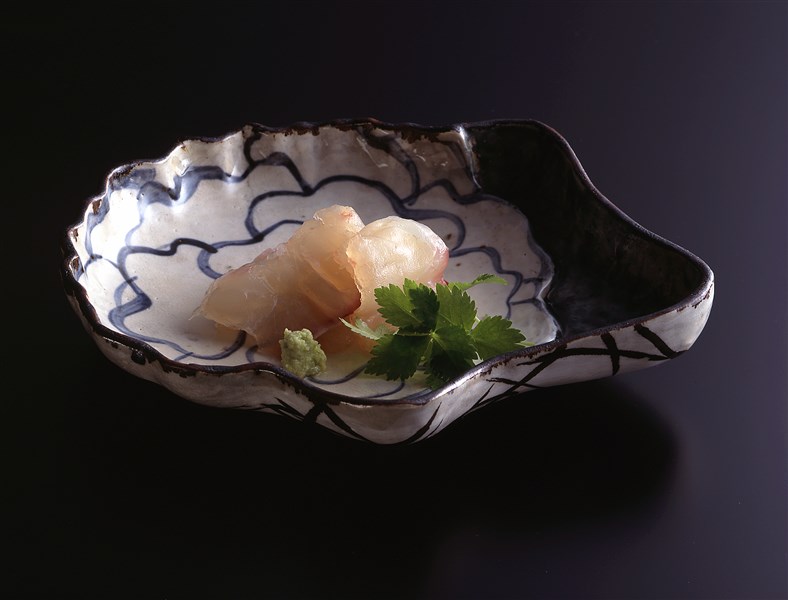乾山色絵立葵図向付
- 江戸時代 一八世紀
色絵立葵図向付
色絵立葵図向付 一客 図録解説
一輪の立葵を大きく配して葉の部分を加えて輪郭を器の形とした向付です。今は一客だけになっていますが、本来はおそらく十客の組物で、現在のところ他に作例を見ません。
型造りで成形され白化粧下地の部分が立葵の花となり、染付で花弁を縁取っています。裏面の側の一部にも白化粧を施して、銹絵と染付で薄(すすき)文を描いています。透明釉を掛けて本焼し、葉の部分に濃緑の上絵付けを施しています。土が露わとなった底には五つの摘み形脚が付けられ、細かな白土系の素地が見てとれます。その中央には銹絵で乾山銘が記されています。
鳴滝窯跡遺物の中にこの向付の部分とよく似た陶片があり、またこの向付に記されている乾山銘と類似する銘の陶片も存在することなどから、この向付は二条丁子屋町時代に先行する、鳴滝窯時代の型造りによる作例である可能性が非常に高いと考えていたところ、立命館大学・木立雅朗教授、鄭銀珍研究員らの調査によって鳴滝窯出土の陶片と符合することが確認され、乾山窯鳴滝時代の製品と見なして間違いないことがわかりました。見込みの立葵の輪郭部分は一段高く作られ、緑の葉の部分が池になっているのも、食器としての用途を考えてのことでしょう。
Mukozuke Dish with Hollyhock Design
Mukozuke Dish with Hollyhock Design
This dish is formed of one large hollyhock and part of its leaf, its rim forming the shape of the dish. Only one piece is now extant, but it was probably one of a set of ten; no similar examples survive.
After this dish was mold formed, white slip was applied as the ground in the area that the hollyhock flower would fill. The petals are outlined in underglaze cobalt. White slip has also been applied to part of the underside and a pale silver grass motif painted in underglaze iron and cobalt. A transparent glaze was applied and the dish was glaze fired. Then dark green overglaze enamel was applied to the leaf portion. Five button-like feet have been attached to the unglazed underside, where the fine white clay ground is visible. In the center, the Kenzan signature is written in underglaze iron.
Potshards quite similar to parts of this mukozuke have been found in the Narutaki kiln site artifacts. Shards with the Kenzan signature resembling this one also exist. Thus, this piece is highly likely to be an example of mold forming from the Narutaki kiln period, prior to the Nijo Chojiyamachi period. Research by Professor Kidashi Masaaki of Ritsumeikan University and researcher Jung Eunjin and others has confirmed that it corresponds to shards found at the Narutaki kiln site; it can without a doubt be regarded as a product of the Narutaki Kenzan kiln. The perimeter around the hollyhock in the bottom of the dish is somewhat higher and the leaf area somewhat sunken, a shape suggesting that its intended use was for serving food.


